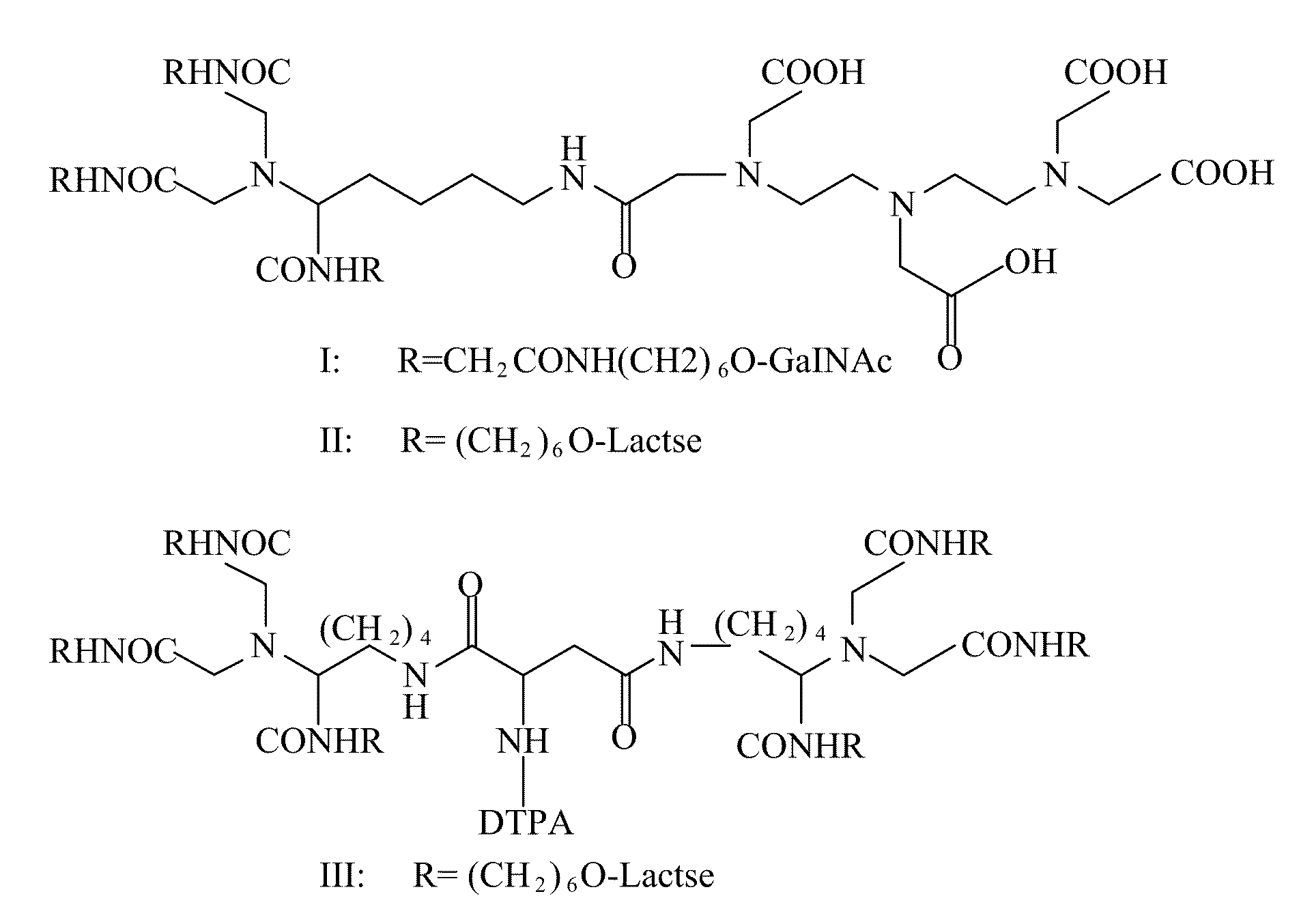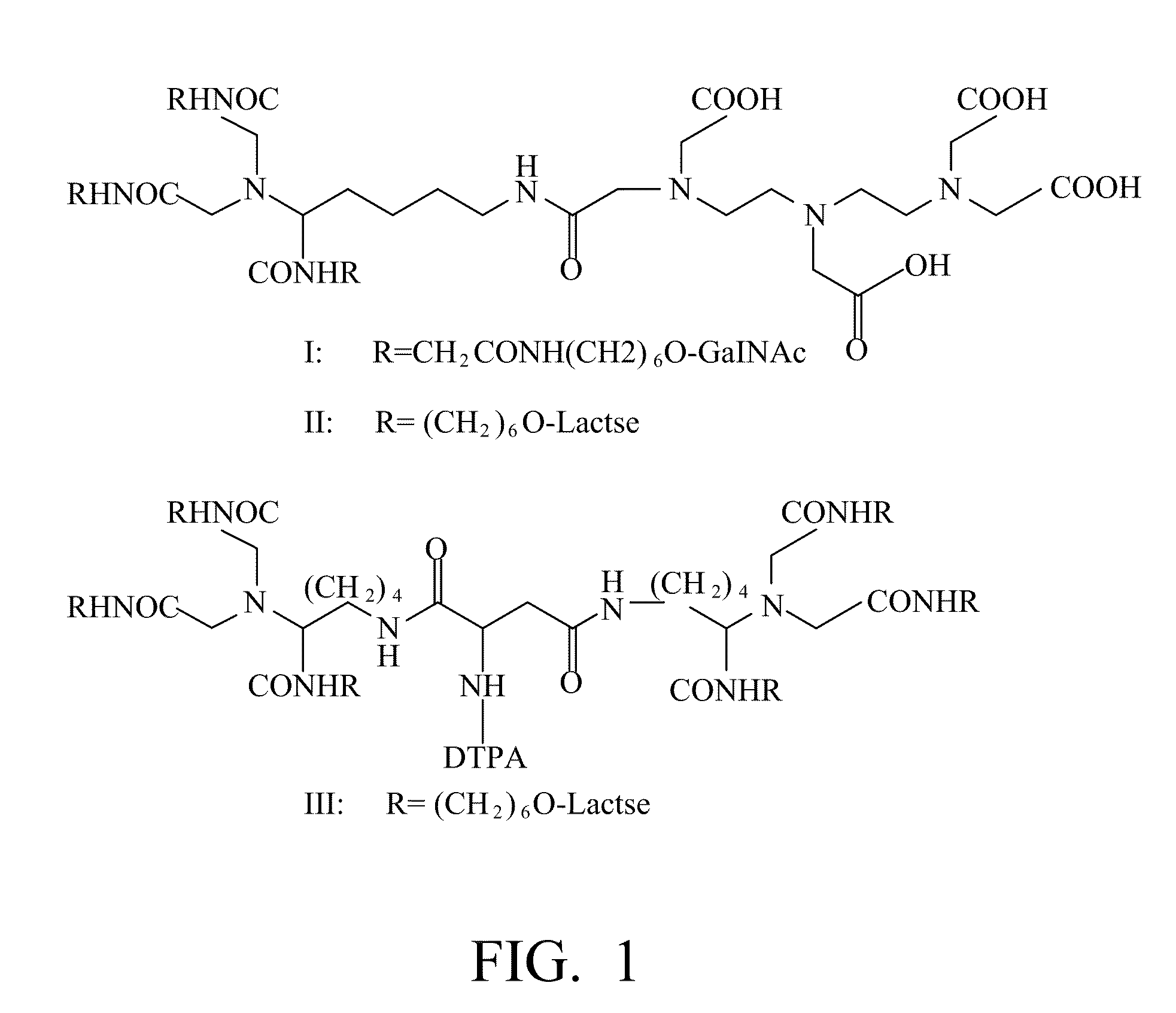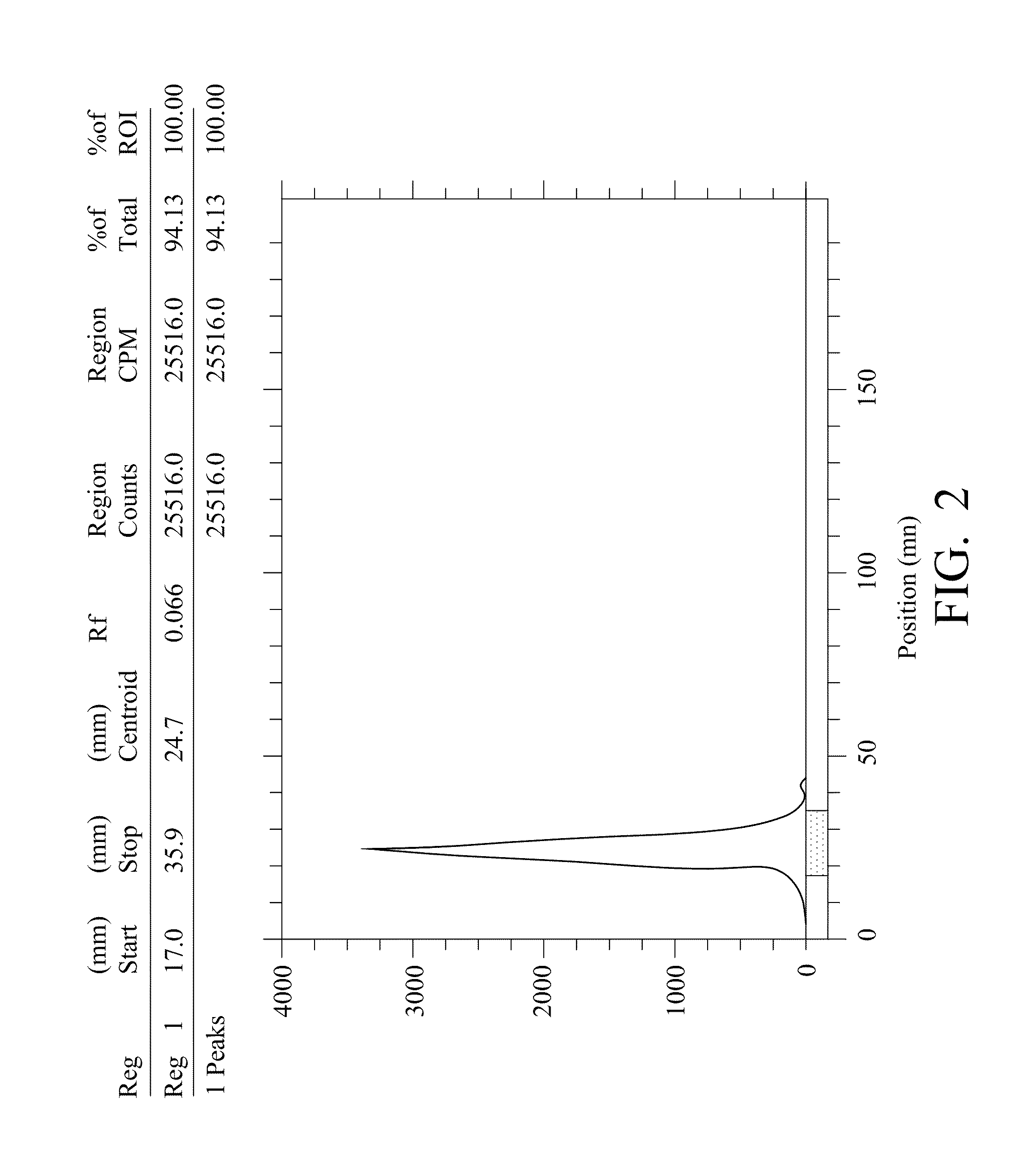Radiolabeling method using multivalent glycoligands as hepatic receptor imaging agent
a multi-valent glycoligand, hepatic receptor technology, applied in the direction of peptide/protein ingredients, group 3/13 element organic compounds, therapy, etc., can solve problems such as difficulty in practice, and achieve the effect of low toxicity
- Summary
- Abstract
- Description
- Claims
- Application Information
AI Technical Summary
Benefits of technology
Problems solved by technology
Method used
Image
Examples
Embodiment Construction
[0033]The features and implementation of the present invention are described in detail with preferred embodiments below.
[0034]I Design of Novel Liver Targeting Drug
[0035]According to the present invention, ε-benzyloxycarbonyl-α-dicarboxylmethyl-L-lysine (Z-DCM-Lys) is used as a new basic structure to be connected to aminohexyl β-GalNAc (ah-GalNAc), glycyl-aminohexyl β-GalNAc (Gah-GalNAc), or aminohexyl Lac (ah-Lac), so as to form a three-chain glycopeptide. As the binding strength of the lactose glycoside and the ASGPR is not as strong as that of the galactosamine glycoside, when the lactose glycoside is connected in series, two molecules of three-chain lactose glycoside will be further connected in series through aspartic acid or glutamic acid. For example, two molecules of ε-Z-α-DCM-Lys(ah-Lac)3 is further connected together through aminohexanoyl aspartic acid (AHA-Asp) to form AHA-Asp[DCM-Lys(ah-Lac)3]2 (hereafter simply referred to as hexa-Lactoside). The free amino end of the h...
PUM
| Property | Measurement | Unit |
|---|---|---|
| molar ratio | aaaaa | aaaaa |
| temperature | aaaaa | aaaaa |
| specific radioactivity | aaaaa | aaaaa |
Abstract
Description
Claims
Application Information
 Login to View More
Login to View More - R&D
- Intellectual Property
- Life Sciences
- Materials
- Tech Scout
- Unparalleled Data Quality
- Higher Quality Content
- 60% Fewer Hallucinations
Browse by: Latest US Patents, China's latest patents, Technical Efficacy Thesaurus, Application Domain, Technology Topic, Popular Technical Reports.
© 2025 PatSnap. All rights reserved.Legal|Privacy policy|Modern Slavery Act Transparency Statement|Sitemap|About US| Contact US: help@patsnap.com



